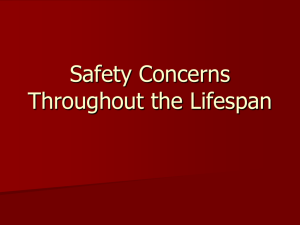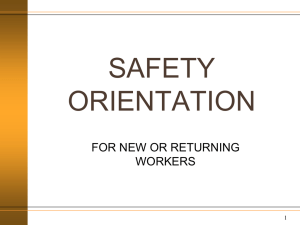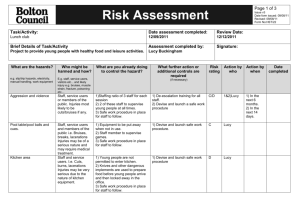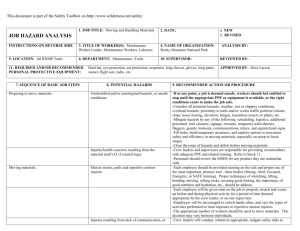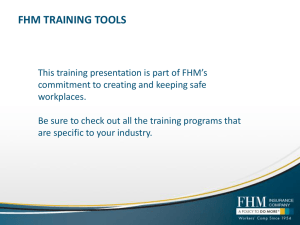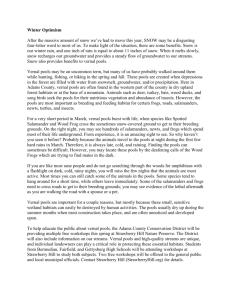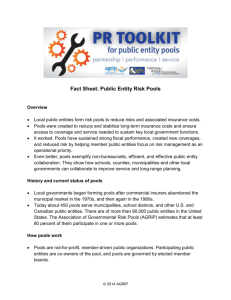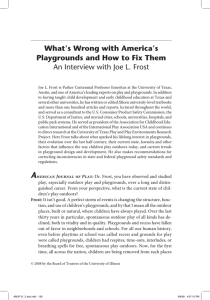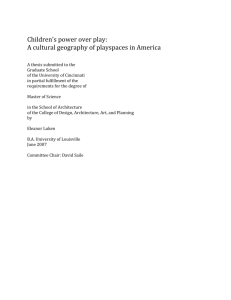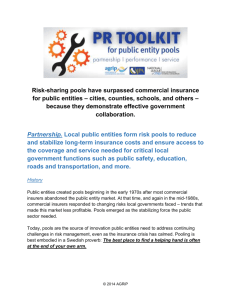CHILD SAFETY IN PUBLIC PLACES
advertisement
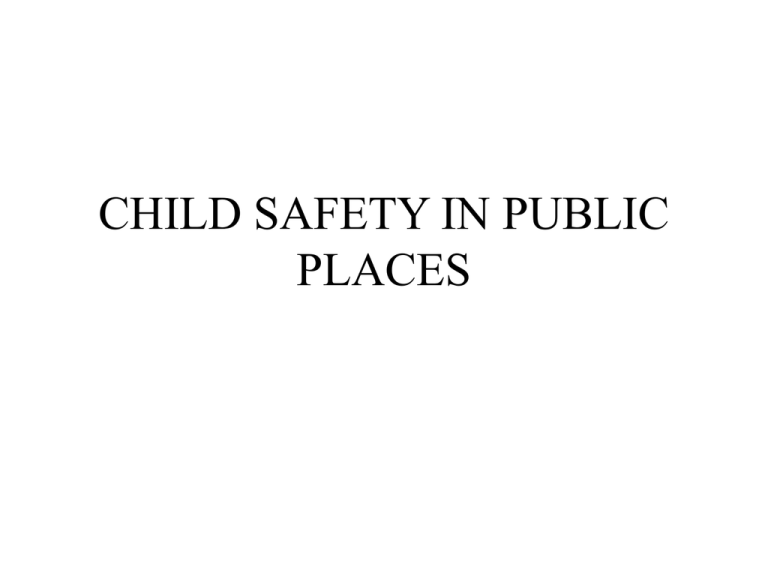
CHILD SAFETY IN PUBLIC PLACES Child Safety • Risk Management. The systematic, planned prevention, and reduction of accidents through selecting safe equipment, reducing hazardous conditions, and providing information and supervision that identifies potential hazards and how to avoid them. – Level I (Limited hazards). Conditions likely to cause minor or nondisabling injuries. – Level II (Moderate hazards). Conditions that are likely to cause serious injury resulting in temporary disability. – Level III (Extreme hazards). Conditions that are likely to cause permanent disability or loss of life or body part. • Some level of risk is essential for healthy play and development, however, risk must be carefully managed and developmentally appropriate. Children who are deprived of reasonable risk often grow to be fearful, timid and brittle. Types of Risk • • • • Physical Risk. Exposed to challenges and hazards Emotional Risk. Exposure to expressions of anger, trust, and fear Intellectual Risk. Admitting errors or trying to outwit a peer Financial Risk. Challenges associated with stock market, gambling, overextending credit card debt • Supervisory Risk. The decision that adults make when observing children engaged in interaction (Intervention vs. Distant Observation) • U.S. Consumer Product Safety Commission (CPSC). Agency of the U.S. government which was organized to assist in evaluating the safety of play resources and play areas. • National Electronic Surveillance System (NEI). Federal agency that collects injury data associated with 15,000 consumer products from hospital emergency departments across the United States. Examining Risk/Hazards in Public Places • Child related injuries in grocery stores accounted for 16,000 injuries in 1996. (Two-thirds of which were treated in hospitals). • Toddlers (1-3 years). Toddlers are extremely active and exploratory. This makes them susceptable to injuries; consequently, it is important to childproof environments. Common accidents – Walking or running into the path of cars – Climbing through gates and fences to drown in pools – Standing up in shopping carts or other wheeled devices and falling onto concrete floors – Latching themselves in refrigerators and car trucks – Contact with hot surfaces – Walking into the path of swings on playgrounds Hazards in Public Places Continued • Preschoolers/Early School-age (3-5 years/5-7 years). Greater control over motor skills but still operating with limited logical reasoning. Children during this stage are able to manouver into areas that were once difficulty to enter. • These children are highly influenced by peers and often engage in risky behaviors through peer influence. The Challenge of Play among Contemporary Children • • • • • • • • Fragmented parenting Latch-key living Television addiction Junk food Gangs Neighborhood dangers Limited community play areas Elimination of recess/Reduction of physical education • All of these factors have contributed to reduced opportunities for motor and cognitive skill development. Consequently, American children rank lowest among developed countries on measures of physical fitness (Dennison et al., 1988; Javernick, 1988; Ross & Gilbert, 1985). • According to Daisaku Ikeda (1979), children from industrialized nations (glass children) grow up in such risk free environments that they lack toughness and appropriate coordination to effectively manage developmentally appropriate tasks. Guidelines/Standards for Safety • American Society for Testing and Materials (ASTM). An organization instrumental in determining national standards of car. • Organizations and play areas that adhere to these standards protect themselves from the consequences of litigation. Soft Contained Play Equipment • Typical areas consists of large plastic tubes for children’s crawling, pools of plastic balls, climbing nets and slides. By 1996, there were about 8,000 free play centers and 600 pay for play centers in the US. • Properly supervised SCPE environments are safe alternatives to traditional, outdoor playgrounds. However, there are limited benefits regarding development. – – – – – Concerns: Toddlers colliding with older children Failure to supervise children Failure to inspect and maintain the equipment Slides exiting into ball pools resulting in collisions between children – Children falling onto children buried in ball pools – Torn safety netting/dirty equipment/dirty floor surfacing Playground Safety • Every year in the US, almost a quarter million children are taken to hospital emergency rooms for injuries on playgrounds. Speculative reasons: – Growing number of playgrounds at schools, child care centers, and public parks – Growing age of playgrounds at schools – Neglected maintenance – Absence of adult supervisors – Declining fitness levels of children Amusement Parks • Incomplete CPSC data indicate that 7,000 to 8,000 people are injured on amusement rides annually. Reports are misleading because the actual reports come from the parks and there is incentives to underreport accidents. • Water Safety – In southern states, including California, Texas, and Arizona, drowning is the top killer of young children. – More than 600 children drown each year in US (2nd leading cause of death for children under 5 years) – In residential pools, about 300 drownings and 2,300 near-drownings occur each year to children under 5 years

